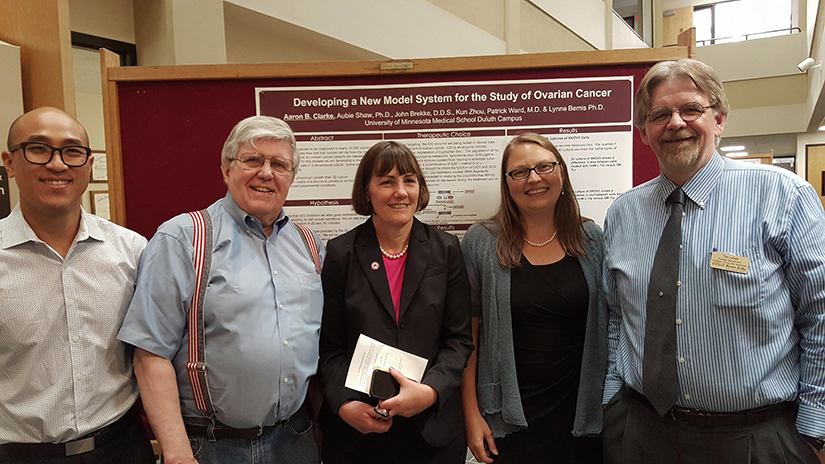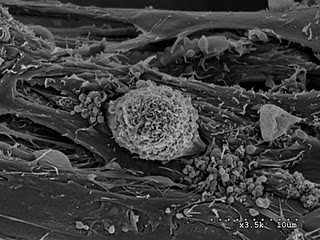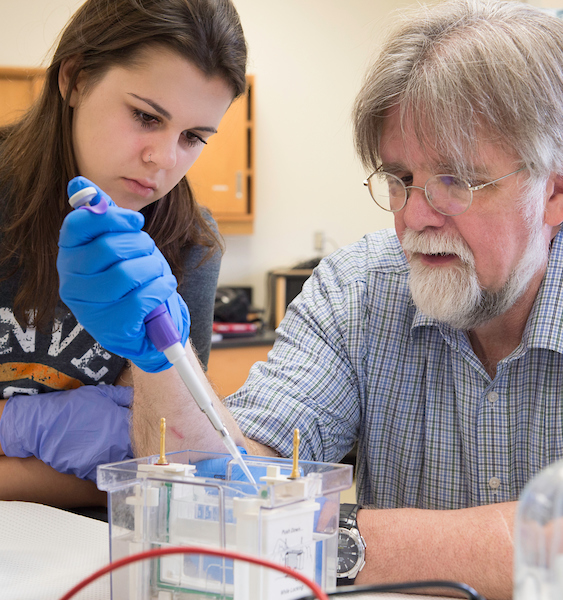UNIVERSITY OF WISCONSIN River Falls
Biology
Tissue and Cellular Innovation Center
Mission Statement
The mission of the UWRF Tissue and Cellular Innovation Center is to develop a nationally recognized, self supporting "Center of Excellence" for research and training in tissue engineering and stem cell biology through collaborative interactions with academic, industry and clinical partners.
 The joint TCIC/BRTI/UMD team who co-presented at the Moonshot Symposium at UMD.
The joint TCIC/BRTI/UMD team who co-presented at the Moonshot Symposium at UMD.
Professor Tim Lyden Presents Research at Summit
University of Wisconsin-River Falls biology Professor Tim Lyden and his Duluth industrial partner co-presented cutting-edge cancer research at the first White House sponsored national Cancer Moonshot Summit regional event at the UM-Duluth Medical School June 29, 2016.
The research, developed by Lyden, as the director the UW-River Falls Tissue and Cellular Innovation Center (TCIC), is the continuation of summer 2015 research involving four TCIC Team Brazil exchange students. The research is now the focus of a new student researcher, with Lyden as mentor and project developer, in the 2016 UW-River Falls Summer Scholars Program.
"Just as new technologies and toolsets had to be developed during the early 1960s to make the original Moonshot possible, new technologies and insights are now needed to power the current Cancer Moonshot in the 21st century," said Lyden. "Small-scale tissue engineering and 3D modeling of cancer is just such a new technology and provides us with never before available toolsets that will power breakthroughs in our understanding of cancer and eventually lead to new treatments for this dreaded disease."
The Duluth Cancer Moonshot Summit is part of Vice President Joe Biden's National Cancer Summit, including conversations in communities across the United States. These summits were the first time that individuals and organizations representing the entire cancer community and beyond -- philanthropists, data and tech experts, advocates, patients and survivors -- convened under the national charge to double the rate of progress toward a cure.
"This is a very important and exciting new area of cancer research generally, that is already bearing fruit in terms of an enhanced understanding of the disease," Lyden said. "Our new work this summer is generating many exciting new observations as well, and further confirming the potential impact of these 3D modeling tools in future cancer research."
Innovation Center History
The UWRF Tissue and Cellular Innovation Center has it’s origins in the Lyden Lab which was founded in 2001. This lab originally focused on normal placental cell biology, continuing work done by Dr. Lyden at the Ohio State University Medical School during the 1990s.
By 2004, the lab was transitioning to a broader interest in developmental biology and had begun to use 3-D cell culture to model tissue formation. This work involved a significant emphasis on fetal stem cell biology in relation to artificial tissue formation. With the support of the UWRF Foundation, the lab next transitioned into the Cellular Imaging and Analysis Center.
In 2006, the lab, now called the UWRF Center for Advanced Cell Biology, shifted almost exclusively to working on 3-D artificial tissues and potential applications of this material. This new focus on practical applications was fostered by significant funding support from WiSys Technology Foundation. In addition, funding has also been provided throughout the TCICs development by the UW-RF Foundation, the CAS and CAFE Dean’s offices and the Provost. Significant support and some funding has also been available through the Biology Department and Biotechnology Program.
In February of 2008, the Managing Director of the WiSys Technology Foundation proposed that the Center for Advanced Cell Biology transition into one of five proposed "Innovation Centers" to be established throughout the UW System. These Centers represent a new paradigm at the comprehensive campuses of the System which focuses on an economic development approach that combines cutting edge teaching/training, research and community outreach as well as unique new partnerships with industrial and clinical collaborators.
Current elements of the TCIC research program
- Development of complex composite artificial tissues or ATs based on cell lines, primary fetal stem cells and human embryonic stem cells.
- Expanding our working "library" of natural extracellular matrix (ECM) materials.
- Development of new artificial ECM based on "biomimetic" concepts.
- Development of translational medicine applications of our 3D culture technology in cancer as well as other clinically relevant areas.














